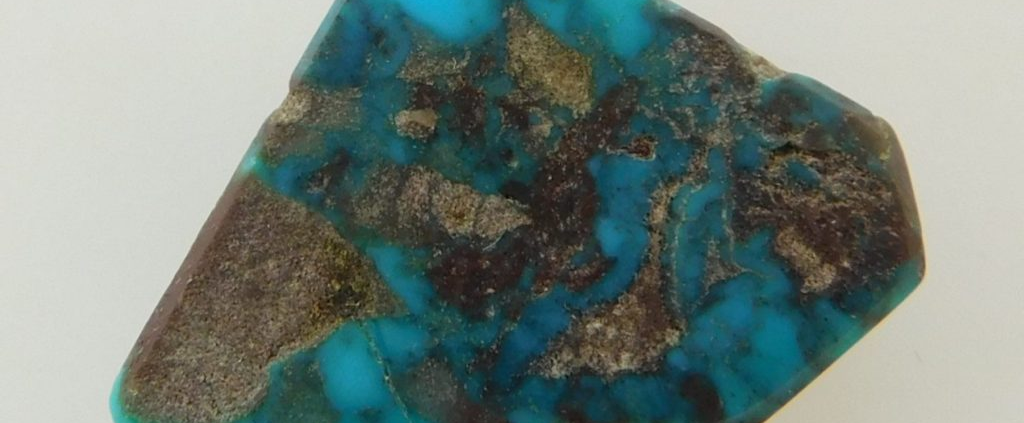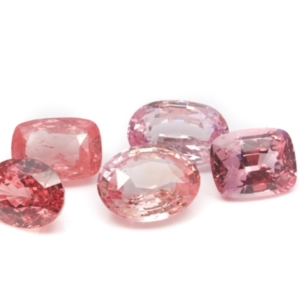Bisbee Turquoise
Turquoise is a blue-to-green mineral that has been appreciated for thousands of years due to its unique hue and supposed metaphysical properties. Essentially, it is the hydrated phosphate of copper and aluminum, mainly rare, which enhances its appeal. Culturally, it holds great value in most civilizations.
For instance, Native American tribes of the Southwestern United States have extensively used it in jewelry and ceremonial items, considering them to have protective and healing powers. Turquoise beads were found in the Middle East dating back to 5000 BCE, and in ancient Egypt, they adorned the tombs of pharaohs.

Welcome to Bisbee Turquoise
Bisbee Turquoise is the most wonderful of its kind; it comes from the copper mines close to Bisbee, Arizona, primarily the Lavender Pit. Known for its deep blue color and complex matrix webbing, Bisbee Turquoise is regarded as one of the finest in the world. What differentiates Bisbee Turquoise from all other types of turquoise is the color and the variability in matrix patterns, which are often made up of browns and blacks, and sometimes even reds from the mineral iron. About aesthetics and its rarity of occurrence, this variety is quite expensive because many years have passed since mine was worked, and genuine Bisbee material is increasingly complex to find. Collectors and aficionados look for Bisbee Turquoise simply because of the uniquely different characteristics of the turquoise and that it is a unique piece of American mineral history.
Contents
- History of Bisbee Turquoise
- Characteristics of Bisbee Turquoise
- Physical Properties of Bisbee Turquoise
- Variations in Appearance and Distinctive Qualities
- Applications and Uses of Bisbee Turquoise
- Geological Formation of Turquoise
- Specific Conditions for the Formation of Bisbee Turquoise
History of Bisbee Turquoise

Discovery of Bisbee Turquoise in Arizona
Bisbee Turquoise was first discovered in the Bisbee area, located in the southeastern part of Arizona, during the early 20th century. The area around Bisbee was initially explored and developed for its vast copper deposits, which were among the richest ever found in the United States. It wasn’t until miners were deep into the extraction of copper and other minerals that they stumbled upon turquoise deposits embedded within the host rock. This discovery marked the beginning of turquoise mining in the region, although it was initially considered a byproduct of the more lucrative copper mining operations.
Historical Mining Activities at the Bisbee Mine
The mining operations at Bisbee began in the late 19th century, focusing primarily on copper, gold, and silver. The town of Bisbee quickly became one of the richest mineral sites in the world due to the extensive copper deposits. The Lavender Pit, one of the main mining areas, opened in 1950 and became a key location for the extraction of Bisbee Turquoise. During its operational years, miners extracted significant amounts of turquoise from this pit, along with the primary copper ore.
Transition from Copper to Turquoise Mining
Although copper remained the primary focus of mining operations in Bisbee, turquoise gradually gained attention for its quality and beauty. The unique characteristics of Bisbee Turquoise, such as its striking blue color and intricate matrix patterns, made it a favorite among gem collectors and jewelry makers. Over time, as the demand for turquoise grew, specific efforts were made to extract it, although it never surpassed copper in economic importance.
Eventually, as copper reserves dwindled and mining operations became less viable economically, the mines, including the Lavender Pit, closed in the mid-1970s. However, during its operational years, and even after its closure, Bisbee Turquoise continued to be revered in the gemstone community. Today, due to the closure of the mines, genuine Bisbee Turquoise is rare and highly sought after by collectors and enthusiasts, cherished not only for its beauty but also for its historic value as a remnant of Arizona’s rich mining heritage.
Characteristics of Bisbee Turquoise

Physical Properties of Bisbee Turquoise
- Color: Bisbee Turquoise is renowned for its deep, vibrant blue color, which can range from a lighter sky blue to a darker navy. This spectrum of blue is often intermixed with greenish tones, depending on the levels of copper and iron in the stone.
- Matrix: The matrix in Bisbee Turquoise is one of its most distinctive features. It typically includes a heavy, dark matrix that ranges from chocolate brown to black, and sometimes even includes hints of red or gold. This matrix often forms intricate patterns, such as webbing or splotches, which are highly prized for their aesthetic appeal.
- Hardness: Like most turquoise, Bisbee Turquoise has a hardness of about 5 to 6 on the Mohs scale, making it relatively soft compared to many other gemstones. This level of hardness necessitates careful handling and setting in jewelry to avoid scratches and damage.
Variations in Appearance and Distinctive Qualities
Bisbee Turquoise is distinguished from other turquoise varieties primarily by its rich color and unique matrix patterns. Here are some key variations in appearance that set Bisbee Turquoise apart:
- Depth of Color: Bisbee Turquoise generally exhibits a deeper and more intense blue compared to other types of turquoise, which often have a paler or more pastel shade. This deep blue is thought to be a result of the specific mineral composition in the Bisbee area.
- Matrix Patterns: The matrix in Bisbee Turquoise is more pronounced and varied than in many other types of turquoise, which tend to have lighter and less distinct matrix patterns. The contrasting matrix in Bisbee stones adds to their visual appeal and uniqueness.
- Consistency and Quality: The overall quality of Bisbee Turquoise is consistently high, with dense, compact stones that polish well. This consistency is another factor that makes Bisbee Turquoise particularly desirable among collectors and jewelers.
These unique characteristics make Bisbee Turquoise not only a favorite among gemstone enthusiasts but also a marker of authenticity. Its distinctive appearance helps differentiate genuine Bisbee Turquoise from other turquoise in the market, which can sometimes be treated or enhanced to mimic its deep color and matrix.
Applications and Uses of Bisbee Turquoise

Bisbee Turquoise, known for its distinct beauty and rarity, finds applications primarily in jewelry and artistic ornamentation, but its uses extend into cultural and symbolic realms as well. Here’s a closer look at the key applications and uses of this exceptional gemstone:
- Jewelry: The most common and prominent use of Bisbee Turquoise is in the jewelry industry. Due to its vivid color and captivating matrix patterns, it is highly sought after for creating various types of jewelry, including rings, necklaces, bracelets, and earrings. The stone is often set in silver or gold, and its striking appearance makes it a centerpiece in both modern and traditional designs.
- Art and Decoration: Bisbee Turquoise is also used in various art forms, particularly inlay work and mosaics. Artists value the stone for its color depth and pattern, using it to create stunning visual pieces that often reflect southwestern or Native American styles. Additionally, it is sometimes incorporated into sculptures and other decorative objects.
- Heirlooms and Collectibles: Given its rarity and historic value, Bisbee Turquoise is frequently collected as an heirloom gemstone. Enthusiasts and collectors seek out Bisbee Turquoise for its unique qualities and as an investment, often keeping it in raw form or as part of elaborate jewelry pieces.
- Cultural Significance: In Native American cultures, particularly among the indigenous peoples of the Southwestern United States, turquoise is considered a sacred stone with spiritual significance. It is used in ceremonies and as a symbol of status and wealth. Bisbee Turquoise, with its deep hues and intricate matrix, is especially prized in these contexts.
- Metaphysical Properties: Like other forms of turquoise, Bisbee Turquoise is believed to carry metaphysical properties. It is often used in healing and spiritual practices, where it is thought to promote healing, protection, and positive energy. Its deep blue shades are associated with tranquility and wisdom, making it a popular choice for those seeking to enhance spiritual balance and communication.
These applications highlight the versatility and enduring appeal of Bisbee Turquoise. Whether in the form of exquisite jewelry, artistic decorations, or cultural artifacts, this gemstone continues to be cherished worldwide for both its aesthetic qualities and its deeper cultural and spiritual meanings.
Geological Formation of Turquoise
Turquoise is a secondary mineral typically formed in the arid regions where the leaching of copper ores occurs. It is primarily a hydrated phosphate of copper and aluminum, which crystallizes in the Earth’s crust under specific geological conditions. The formation process of turquoise can be summarized into several key steps:
- Water Penetration: Turquoise forms when water penetrates through mineral-rich rock, particularly rocks that contain copper, aluminum, and phosphorus. This usually occurs in regions with high mineralization and considerable geological activity.
- Chemical Reactions: As the water seeps down, it interacts with these minerals, facilitating a chemical reaction in the presence of phosphoric acid. The reaction results in the formation of turquoise deposits within the host rock, usually filling cavities or fractures.
- Evaporation and Precipitation: The arid climate plays a crucial role as the evaporating water leaves behind the minerals that eventually precipitate as turquoise. The slower the water evaporates, the finer the quality of the turquoise that forms.
- Matrix Formation: The presence of other minerals in the host rock, such as iron or manganese, can form a matrix within the turquoise, giving it distinctive patterns and adding to its unique aesthetic qualities.
Specific Conditions for the Formation of Bisbee Turquoise
The formation of Bisbee Turquoise in Arizona’s Bisbee region involved unique geological conditions that contributed to its distinctive characteristics:
- High Copper Content: The Bisbee area is well-known for its substantial copper deposits. The high copper content is a primary factor contributing to the vibrant blue color of Bisbee Turquoise, which is more intense compared to turquoise from regions with lower copper concentrations.
- Unique Mineral Matrix: The specific mineral composition of the surrounding rock in Bisbee leads to the formation of a dark, often intricate matrix within the turquoise. This matrix typically includes iron and sometimes manganese, contributing to the complex web-like or splotchy patterns that are characteristic of Bisbee Turquoise.
- Geological Environment: The geological environment of the Lavender Pit and surrounding areas in Bisbee, where turquoise was mined, provided a perfect setting for its formation. The area’s specific geology facilitated the accumulation of the necessary minerals and the right conditions for the chemical reactions needed to form high-quality turquoise.
- Arid Climate: The arid climate of Arizona is ideal for the formation of turquoise. The lack of water promotes the slow evaporation necessary for the precipitation of mineral-rich solutions into turquoise, allowing for the growth of dense and well-formed crystals.
These conditions not only facilitated the creation of turquoise but also ensured that the Bisbee Turquoise developed its renowned deep blue color and striking matrix, making it one of the most sought-after varieties of turquoise in the world.


Leave a Reply
Want to join the discussion?Feel free to contribute!